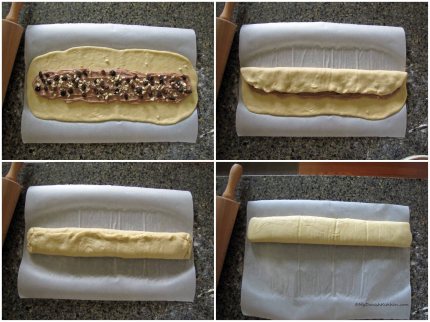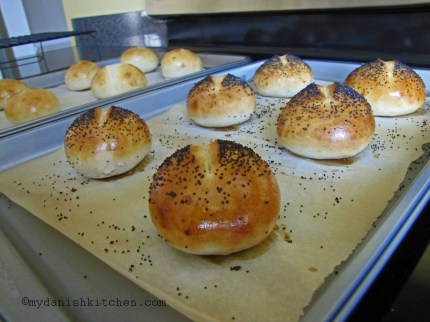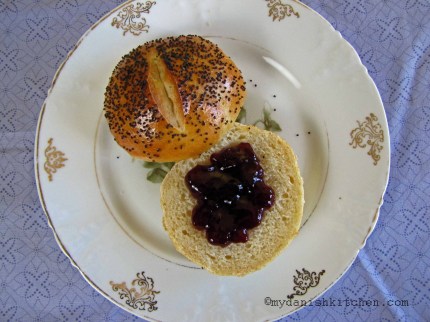Danish Kringle is so delicious and it’s also surprisingly quick and easy to make. I recently made this one with a Marzipan remonce which was a big hit. Kringle also freezes really well so it’s one of those desserts you can easily make ahead and just pull out of the freezer, thaw, bake and serve. Enjoy!
Kringle (makes 2 Kringler, serves 12-16)
Ingredients:
For the dough:
1 deciliter water (3.4 fluid oz or 100 ml)
2 1/4 teaspoons active dry yeast (or 25 grams cake/fresh yeast)
2 tablespoons sugar
2 large eggs, room temperature
a pinch of salt
150 grams salted butter, cut into small cubes, room temperature
325 grams all-purpose flour
For the Remonce filling:
100 grams butter, room temperature
100 grams sugar
100 grams marzipan, room temperature and broken into small pieces
Other optional fillings:
50 grams golden raisins
25 grams blanched almonds, chopped
Garnish:
1 egg, for egg wash
Pearl sugar (or regular sugar)
slivered almonds
Directions:
To make dough: Using hot water, confirm that the water is between 100 to 110 degrees F (no more than 110 degrees). Pour warm water into a large bowl, add 1 tablespoon of the sugar and sprinkle yeast over water, let sit for 10 minutes. Add remaining sugar, eggs, a pinch of salt, butter and flour. Using your hands, mix all ingredients until dough comes together. Dough may feel a little tacky and there may still be small pieces of butter, that is OK. Transfer dough to a clean bowl, cover with a clean, dry tea-towel, place bowl in a warm location and let rise for 1 hour.
To make Remonce filling: Beat butter and sugar until smooth. Add marzipan and continue to beat until completely smooth.
Rolling out dough: For easy clean-up, place two long pieces of plastic wrap (cling wrap) onto your work surface. Sprinkle plastic wrap with flour and give the dough a quick soft kneading, sprinkle with a little more flour until dough is soft and elastic, and no longer sticky. Divide dough into two equal portions and form each piece of dough into a log. Working with one log at the time, roll out the log (on top of the plastic wrap) to approximately 30 x 15 centimeter rectangle (11.5 x 6 inches). Spread 1/2 the Remonce filling down the middle of each dough rectangle and sprinkle with raisins and almonds (optional). Fold the ends over about 2 cm (almost 1 inch) then fold the outer 1/3 of dough over the middle and then the other outer 1/3 of dough over the middle again. Holding onto the plastic wrap, roll dough rectangle over so it’s now placed upside-down (seam side down). Carefully place dough rectangle onto baking sheet lined with parchment paper. Repeat process with second piece of dough. If planning on baking both Kringler at this time, allow both dough rectangles to rise for another 15 minutes on the baking sheet before baking.
Freezing: If you are planning on freezing the unbaked Kringle, wrap it up in parchment paper and then foil (or a large zip lock bag if you have one). When ready to bake, thaw in refrigerator for 24 hours, then place on parchment paper at room temperature for 1 hour before baking.
Baking: Preheat oven to 220 degrees C (425 degrees F). Lightly beat egg with a fork and brush dough with egg wash. Sprinkle with Pearl sugar and almonds. Bake for 12-14 minutes on middle rack in preheated oven. Allow to cool on baking sheet. Enjoy!
Source: adapted from Anne Magrethe i Hirtshals







































